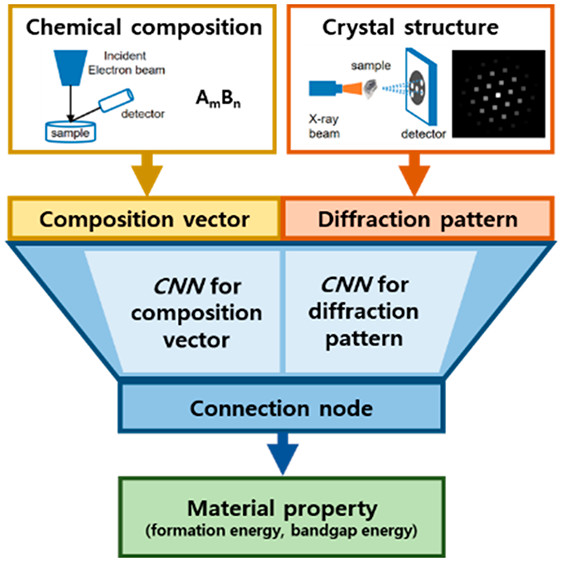Deep Learning-Based Prediction of Material Properties Using Chemical Compositions and Diffraction Patterns as Experimentally Accessible Inputs
-
Authors :
Jeongrae Kim, Leslie Ching Ow Tiong, Donghun Kim, and Sang Soo Han
-
Journal :
the journal of physical chemistry letters
-
Vol :
12
-
Page :
8376-8383
-
Year :
2021

Abstract
We report a deep learning (DL) model that predicts various material properties while accepting directly accessible inputs from routine experimental platforms: chemical compositions and diffraction data, which can be obtained from the X-ray or electron-beam diffraction and energy-dispersive spectroscopy, respectively. These heterogeneous forms of inputs are treated simultaneously in our DL model, where the novel chemical composition vector is proposed by developing element embedding with the normalized composition matrix. With 1524 binary samples available in the Materials Project database, the model predicts formation energies and band gaps with mean absolute errors of 0.29 eV/atom and 0.66 eV, respectively. According to the weighing test between these two inputs, the properties tend to be more influenced by the chemical composition than the crystal structure. This work intentionally avoids using inputs that are not directly accessible (e.g., atomic coordinates) in experimental platforms, and thus is expected to substantially improve the practical use of DL models.
















